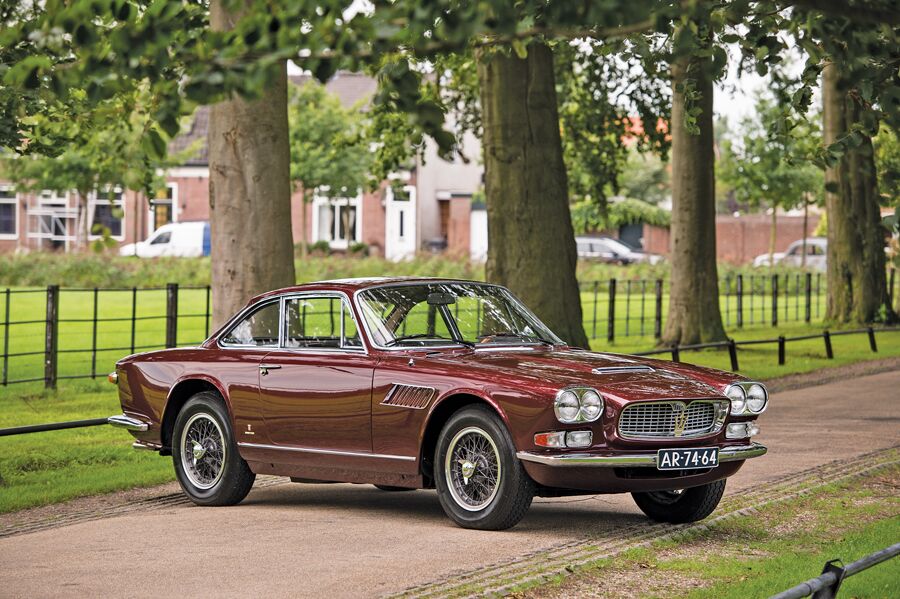SCM Analysis
Detailing
| Vehicle: | 1966 Maserati Sebring 3.7 Coupe |
| Years Produced: | 1965–66 |
| Number Produced: | 98 (Sebring II) |
| Original List Price: | $17,500 |
| SCM Valuation: | $145,000–$250,000 |
| Tune Up Cost: | $1,900 |
| Distributor Caps: | $285 |
| Chassis Number Location: | Engine compartment on firewall |
| Engine Number Location: | Stamped on side of block |
| Club Info: | Maserati Club International |
| Website: | http://www.maseratinet.com |
| Alternatives: | 1966 Aston Martin DB6, 1966 Ferrari 330 GTC, 1966 Lancia Flaminia SuperSport |
| Investment Grade: | C |
This car, Lot 15, sold for €270,250 ($307,058; €1.00=$1.06), including buyer’s premium, at Bonhams’ The Zoute Sale, Het Zoute, The Netherlands, on October 9, 2015.
This month’s profile assignment immediately made me think of “A Tale of Three GTs.” You know — “They were the best of cars, they were the worst of cars. They were the wisest of investments, they were the most foolish of investments…” I will spare us all the pain and not stretch this any further.
One of the more fascinating pursuits among collectors and would-be collectors in the past few years has been the search for the next mover. That elusive diamond hidden in plain sight that had been overlooked by a distracted market and was ready to jump in value. A car you just couldn’t lose money on.
Just about everyone, including myself, has long thought most Maseratis to be undervalued. Of course, even the term is misleading, as no single observer gets to decide what the correct value of any object should be. That’s the role of the market, and all we can do is offer a humble opinion.
I’ve often stated and written, to boring excess, that while prices in the market don’t always follow logic, it always pays to look to the fundamentals when examining why certain cars appreciate more quickly and steadily than others. Rarity, beauty, historic significance, marque history and reputation, along with usability, drive the bus — and the combination determines the destination.
Three 1966 GT cars
It’s instructive to compare the relative market values of three 1966 GT cars — all built in limited numbers and aimed somewhat at the same consumer. “Somewhat” because two of our GTs make do with DOHC inline 6-cylinder engines while the third doubles down with 12 pots in a Vee — but with a mere SOHC per bank. The cars are the Maserati Sebring, the Aston Martin DB6 and the Ferrari 330 GTC.
While Maserati and Aston had been absent from competition for years by 1966, their reputations still rested on their prowess on the track, and that gave an aura of glamour to their GT cars.
The 3.7-L Sebring put out 255 horsepower, while the 3.9-L Aston had 286 horsepower. Ferrari, of course, was still all about competition. The buyer who chose the 330 GTC was generally someone who was a more aggressive sort, and the 3,967-cc 12 was the most powerful engine at 300 horsepower. But they’re all in the same ballpark, and the 330 GTC was intended to be a gentlemen’s express, rather subtle and conservative in styling — and with the wide seats captains of industry required.
Values creeping closer
Looking at the past five years, all three cars have increased markedly. The Ferrari has seen a fourfold increase from 2010 to 2015 but has begun to plateau a bit, with cars being available in the $800k range after regularly breaking the $1m mark. Aston prices have been buoyant for years, and the DB6 has gone up about 1.5 times in the period, while the Sebring has seen a 3.5-fold increase. More interestingly, in 2010 the typical DB6 sold for more than three times as much as a Sebring, whereas now it’s closer to 1.5 times as expensive.
As someone with seat time in all three cars, I can state with some confidence that it comes down to individual preference. Each car will deliver an entertaining, comfortable driving experience and is rare enough to excite both owner and observer. They are excellent representations of the best of what their brands have to offer. If any meet your needs, they’re likely to bring value and enjoyment in use and be reasonable financial risks as well.
While larger trends can be seen in the current market, increasingly they are countered by a very individual, car-specific dynamic. It’s about the condition, history and location of a particular car and the needs and desires of a potential buyer at a precise moment.
Just because one totally original car in Silver sells in New York City on this date for this price doesn’t mean the same model, completely restored in Dark Blue, would bring the same price in Paris a month later.
Sebrings on the rise
Trusted eyes on the scene in Belgium described this Maserati to me as being in “very good condition, mostly restored but with some original bright trim pieces in very good condition — no signs of any rust or corrosion and the car performed well on a brief drive.”
So it wasn’t a super-fresh concours restoration, but a very presentable, well-cared-for car in good colors. It is not a superstar, but it also is not a need-filled project. As such, the price achieved seems to be in line with where the Sebrings have been moving. The world seems to be awakening to these terrific cars. ♦
(Introductory description courtesy of Bonhams.)
